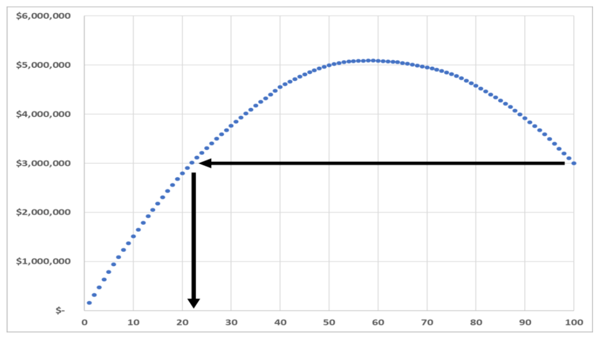
What is Sales Effectiveness and How Do You Measure It?
What is sales effectiveness? If you ask a room of 100 sales professionals, you’ll likely get 100 different answers. Some will talk about performance against goals, while others may refer to revenue or profit. Many say effectiveness has to do with making better use of one’s time.
This latter point is related to a common misconception about effectiveness, that equates it with efficiency. Efficiency is not the same as effectiveness. Efficiency is the rate at which you complete tasks, but it says nothing about whether you’re doing the right tasks.
A highly efficient team performing all the wrong tasks will still be a highly ineffective team.
The problem of defining sales effectiveness is an important one. Without a clear definition, it’s impossible to measure, and without measurement it’s impossible to reliably improve. We can measure win rates or quota attainment, but these are not necessarily the same as effectiveness.
So how exactly are we to define sales effectiveness?
Effectiveness Related to Company Strategy
Before we get into the nitty gritty definition of sales effectiveness, we have to take a look at company strategy. No matter how great a sales team’s numbers are, if their work is not supporting company strategy, it’s not effective.
Sales effectiveness = output per salesperson.
For instance, if company strategy calls for penetration into specific markets, expansion of certain products or services, or a shift in geographic footprint, an effective sales team will deliver sales to support that strategy.
On the flip side, a sales team that delivers great win rates in product lines that the company strategy plans to discontinue, is not effective just because their win rates are high, nor is a sales team that delivers low profit margins when the strategy calls for margin improvement. No amount of volume of sales will make this team more effective without addressing their alignment with company strategy.
A Simple Definition of Sales Effectiveness
In order to understand and measure sales effectiveness, we must have a simple definition that leaves room for aligning with company strategy. I have found this simple formula to be useful:
Sales team effectiveness = average output per salesperson, where output is aligned with company strategy.
Thus, “output” might be “profit,” “revenue,” or “sales of new product line,” based on company strategy.
This simple definition makes it possible to measure effectiveness over time, and thereby determine the impact of actions taken to improve effectiveness.
Breaking It Down
Of course, knowing your average output per salesperson won’t give you a complete picture of your sales team’s performance. If the aim is to improve effectiveness, you have to be able to measure and evaluate at a more granular level.
How you break it down and what you look at in terms of effectiveness will vary based on your team’s structure and your company’s strategy, but here are some commonly used measurements.
- Effectiveness per territory, product, etc.
- Effectiveness at each stage of the process
- Effectiveness based on tenure
- Individual effectiveness against the average
- Impact of investments on effectiveness
Thus, you can measure average output per salesperson in a particular territory, and baseline it against the overall average output per salesperson, to get a better understanding of how particular territories are performing. Likewise, each of the other measurements.
Any one of these approaches can provide insight into what is working and not working on your team, and where to focus efforts for improvement. Periodically, measurements of overall effectiveness (i.e., average output per salesperson) can identify whether these improvement efforts are effective.
The Sales ENABLEMENT Curve
I recently had the opportunity to speak with Frank Troppe and Brett Norgaard, who are doing some interesting research in sales effectiveness. They measure effectiveness against EBITDA, and claim that in many cases, a mere 20% of the sales force is delivering 100% of the EBITDA.
Further, they say, the bottom 20% of the sales force is actually giving back 20% of EBITDA, forcing the 80% number that is commonly cited.

The Sales Enablement Curve - copyright Frank Troppe and Brett Norgaard
By measuring and evaluating sales effectiveness using the effectiveness curve, organizations can get a view into not only what’s working, but which members of their team are detracting from effectiveness. This makes it possible to focus on either improving the poor performers, or moving them out of the organization.
Optimize, Then Measure Again
Top performing organizations constantly measure their performance and optimize their process. Tools like Membrain allow sales leaders to drill down and understand which factors and behaviors impact effectiveness at every stage of the process, and to reinforce the correct actions, skills, and behaviors.
Over time, this practice of measuring and optimizing can be measured against overall effectiveness (average output per salesperson) to better understand how your efforts are impacting your bottom line.
I’d love to show you how Membrain makes measurement and optimization simple. Contact me for a demonstration.
On the same topic - Set Realistic Goals!
Is everyone on your sales team reaching their sales quota?
Or are your sales numbers running away from you? If so, you are not alone. Applying goals in B2B sales is hard; setting realistic goals for your team is even harder. How to set realistic goals »

By George Brontén
George is the founder & CEO of Membrain, the Sales Enablement CRM that makes it easy to execute your sales strategy. A life-long entrepreneur with 20 years of experience in the software space and a passion for sales and marketing. With the life motto "Don't settle for mainstream", he is always looking for new ways to achieve improved business results using innovative software, skills, and processes. George is also the author of the book Stop Killing Deals and the host of the Stop Killing Deals webinar and podcast series.
Find out more about George Brontén on LinkedIn







